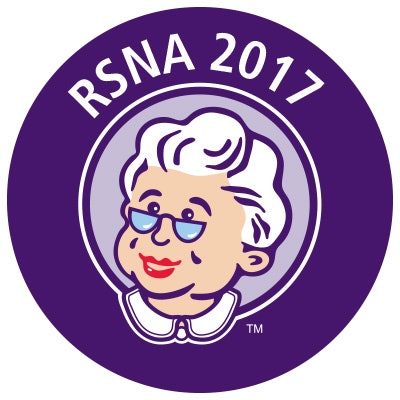
CHICAGO - Over the past 15 years, screening mammography guidelines have changed dramatically, leaving especially younger women confused about when to start breast cancer screening and how frequently to undergo it. A big factor in these changes has been the recommendations issued in 2009 by the U.S. Preventive Services Task Force (USPSTF), according to research presented on Monday at RSNA 2017.
How have the USPSTF's guidelines affected women's compliance with regular screening? They've definitely put a dent in it, presenter Dr. Gilda Boroumand of Thomas Jefferson University in Philadelphia told session attendees.
"The USPSTF's 2009 recommendation was a dramatic departure even from its own 2002 guidelines -- as well as those of other professional organizations," she said. "We wanted to determine whether these 2009 guidelines were followed by sustained changes in screening mammography use."
Shifting guidance
In 2002, the USPSTF recommended screening mammography every one to two years for women ages 40 and older. But in 2009, the task force changed its tune, stating that women ages 40 to 49 should consult with their healthcare provider about whether to begin screening, while women ages 50 to 74 should be screened biennially. For women 75 and older, the USPSTF deemed the evidence for regular screening insufficient. The task force reinforced these 2009 recommendations in 2016.
Previous research on the effects of the USPSTF's 2009 guidelines has been mixed, Boroumand said. She cited a 2012 study that found no significant effect; a 2013 study that found a slight increase in use rates between 2008 and 2011; a 2014 study that found decreased screening between 2009 and 2011; and a 2015 study that found decreased screening in women 75 years and older.
But the research she and colleagues conducted showed a definitive decrease in breast cancer screening in the year immediately following the USPSTF's recommendations -- an effect that has endured through 2015. In fact, the researchers saw a 6.8% decrease in screening mammography when they compared use rates from 2009 with those from 2015.
"We found an abrupt and sustained decline in screening mammography use starting in 2010," Boroumand said. "And this was despite conflicting recommendations [regarding screening for women between the ages of 40 and 49] from the American College of Radiology, the American Cancer Society, and the American Congress of Obstetrics and Gynecologists."
Using Medicare Part B Physician/Supplier Procedure Summary Master Files, Boroumand's team evaluated the annual use rate of screening mammography per 1,000 Medicare beneficiaries between 2005 and 2015.
The use rate rose each year during the study time frame until 2009, starting at 311.6 in 2005 and peaking at 322.9 in 2009, for an annual compound growth rate of 0.9%. But in 2010, the year after the USPSTF released its screening recommendations, the use rate decreased by 4.3% to 309.2. Although the rate of screening increased slightly in 2011 (0.6%), 2012 (1%), and 2015 (1%), mammography screening use rates have not recovered to their pre-2010 levels, Boroumand said.
The long-term trend will likely be a continued decline in screening in younger women, according to Boroumand.
"The data does suggest that radiology practices should expect a shift toward screening in older women unless further policy changes are forthcoming, or unless younger women can be encouraged to screen," she said.
Countering the trend
So how can radiologists counter this trend? Talking with patients and referring physicians is crucial, Boroumand said.
"We really need to embrace an effort to involve patients in their healthcare decisions, and in the case of breast cancer screening, communicate to them the newer data missing from the USPSTF's analysis, such as that from tomosynthesis," she said. "Tomosynthesis not only improves cancer detection, it also reduces false positives, and false positives are a key issue for those concerned about screening mammography. Also, I'm not sure we've fully communicated the benefits of screening mammography to primary care physicians and internists."
Finally, Boroumand said the Medicare information used in the study doesn't lend itself to tracking mortality rates from breast cancer and evaluating the connection between those rates and the USPSTF's recommendations; however, investigating that is important.
"Tracking mortality and screening utilization rates in younger women could provide an important piece of information on the effect of breast cancer screening guidelines," she concluded.




















